Learn about the key signs that indicate your snake plant is crying for help and you can no longer ignore it.
Your snake plant may look tough, but it has its own way of communication when things go wrong. We will describe the subtle signs that often go unnoticed until serious damage has already set in.
Signs That Show Your Snake Plant Is Crying for Help
1. Mushy, Soft Leaves at the Base
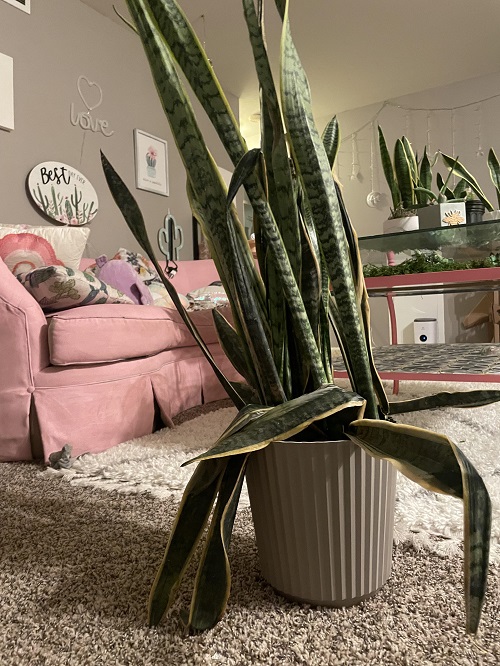
If your snake plant leaves feel squishy near the base and collapse with light pressure, that is a major red flag. This mushiness usually means the roots have started rotting due to excess moisture and poor soil drainage. You will often notice a bad smell or even blackened spots where the leaf meets the soil.
The healthy roots are white or tan, while rotten ones are brown, mushy, and may even fall apart. Once you identify the issue, use sterile scissors to remove all affected roots and damaged leaf bases. It’s vital to allow the remaining healthy roots to air-dry for a few hours before replanting.
Tip: Always use a pot with drainage holes and a gritty mix of cactus soil and perlite.
2. Yellowing Leaves
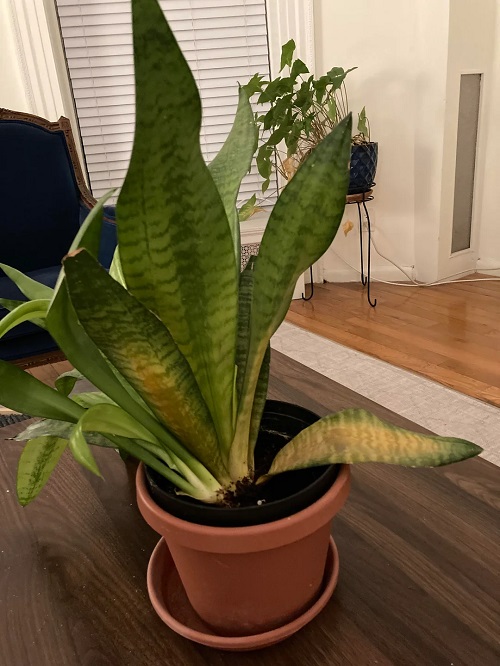
When your snake plant’s lower leaves begin turning pale yellow in patches or streaks, don’t ignore it. This is a classic sign of overwatering, where the roots stay soggy too long and begin suffocating. You might feel that topsoil is dry, but moisture can stay trapped deep below the surface, which affects root health.
Insert a moisture meter or simply use a chopstick deep into the pot and, if it comes out wet, hold off watering. Let the soil dry out completely before watering again, and check if your pot is holding excess water at the bottom.
Tip: Elevate the pot slightly with pot feet or pebbles under the base to improve airflow and drainage beneath the container.
3. Brown, Crispy Tips
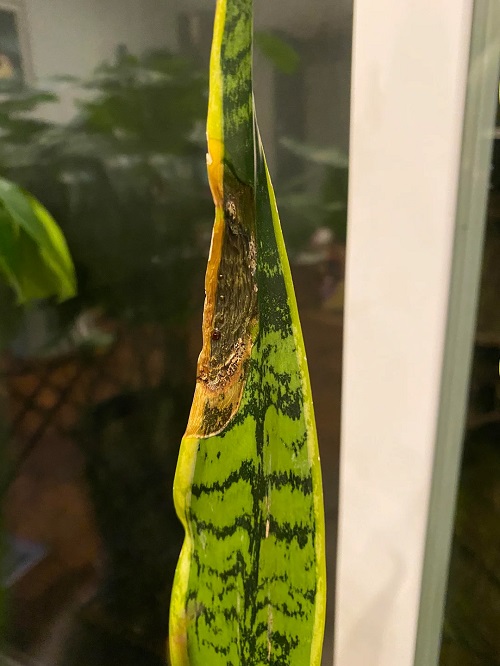
Those dry, burnt-looking edges on your snake plant’s leaves aren’t just cosmetic; they are signaling stress. Common causes include long periods of underwatering, excessive salt buildup from fertilizers, or very dry indoor air. In some cases, using hard water can also lead to mineral deposits at the tips.
If you have been fertilizing frequently, try flushing the soil thoroughly with filtered water to remove built-up salts. You should also avoid cutting the entire leaf; instead, trim the brown tips with sterilized scissors to improve its appearance.
Tip: Use filtered or rain water to reduce mineral buildup.
4. Leaves Curling
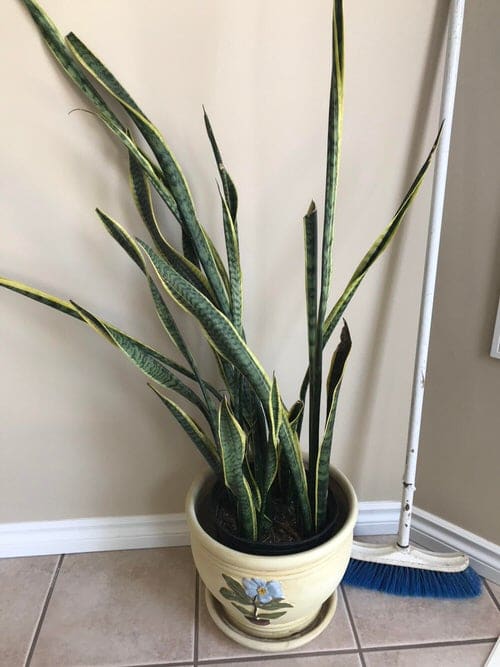
When your snake plant’s leaves start curling inward like a taco, it’s often a cry for water or a sign that pests like thrips or spider mites have moved in. These bugs suck out moisture from the leaves, which makes them twist or wrinkle unnaturally. You might also spot fine webbing or tiny black dots (thrip frass) along the edges.
Outward curling, on the other hand, usually means the plant is shocked. It can be from a recent move, harsh sunlight, or a sudden drop in temperature. By outward curling, your plant is trying to protect itself by reducing leaf exposure.
In both cases, inspect the plant thoroughly, maintain steady temps, and adjust light levels accordingly.
On the other hand, if you see elongated, stretched leaves that are slightly softer than usual, then it’s possible that you’re growing your snake plant in low light and it needs more indirect light exposure.
5. Foul Smell or Mold in Soil
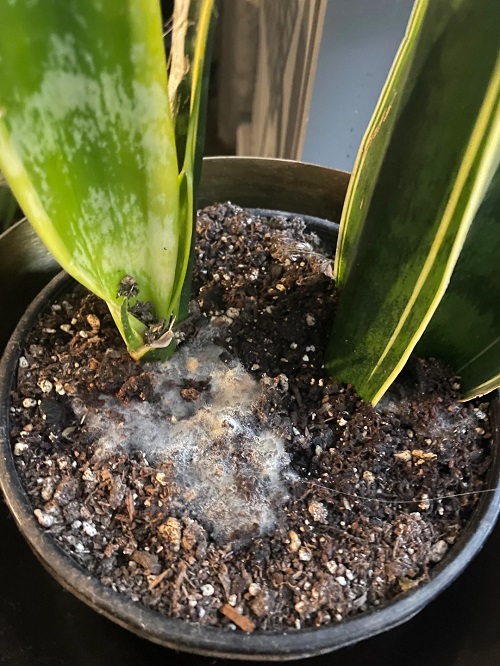
If your snake plant smells musty or you see fuzzy mold on the soil surface, it is a clear warning sign. Excess moisture in a poorly ventilated environment leads to fungal growth and root decay. Mold and rot can spread quickly to the roots and even attract gnats.
You should remove the plant from its pot and inspect the root system. If roots appear dark, slimy, or smell sour, trim off all infected parts and let the healthy roots dry out for some time. You should also replace the soil entirely, while avoiding the reuse of contaminated mix.
Tip: Add a top layer of horticultural charcoal or cinnamon to freshly potted soil to naturally deter mold and improve airflow around the surface.


